PROTECT YOUR DNA WITH QUANTUM TECHNOLOGY
Orgo-Life the new way to the future Advertising by AdpathwayCarrots are easy to nestle into the garden, tucking into gaps in raised beds, containers, and in patches among radishes and other companions.
As we move into late summer and fall, it’s prime harvesting time for the colorful, nutrient-dense root vegetables that sweeten with cool temperatures. With 10 to 12 weeks before fall’s frost, you can get a round of seed sowing for another harvest.
Carrots mature within two to three months and are ready for picking early (as baby carrots) or at full size. While carrots develop all at once, they store in the ground for several weeks when ready, and even longer in the winter. We can pace the enjoyment of a large bounty.
So, how do you tell when the hidden, subsurface taproots are ready for plucking? We’ve got the key indicators to determine when carrots are ready to harvest for peak flavor.
Little Finger Carrot

Little Finger Carrot Seeds
Tendersweet Carrot

Scarlet Nantes Carrot

Scarlet Nantes Carrot Seeds

Growing Carrots
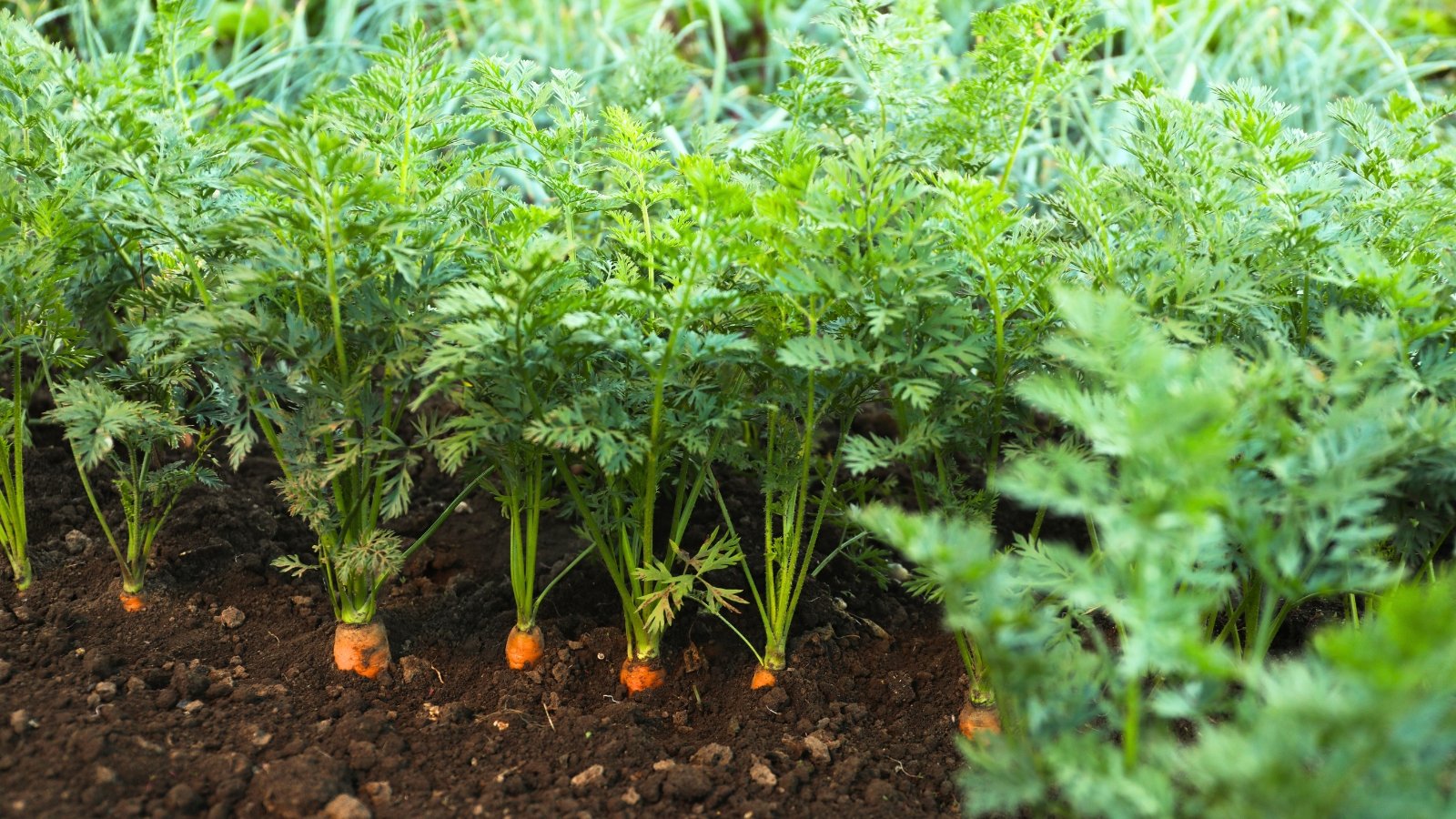 Six hours of sun daily fuels steady root growth.
Six hours of sun daily fuels steady root growth.Carrots (Daucus carota) are compact root vegetables. Nutrition-packed, they’re a good source of vitamins A, B, C, and beta carotene. Colorful varieties have the added benefit of anthocyanin (found in purple carrots), the same healthy antioxidant found in blueberries.
Carrots prefer mild temperatures to germinate, ideally between 50-70°F (10-21°C). The best growth occurs in a range of 60-65°F (16-18°C). In climates with cool summers, they grow all season with successional sowing. Hold off on sowing carrots in warm areas until late summer or fall.
Because the desirable taproots are sensitive to transplant disturbance, direct sowing them in their garden location is ideal. Provide loose, sandy loams with good drainage, free of rocks and clumps that can cause misshapen carrots. They do best in acidic to neutral soils with a pH around 6.0 to 7.0.
Full sun, with six or more hours of sun exposure daily, and consistent moisture are best for the developing roots. Aim for about one inch of water per week from combined rainfall and irrigation. From seed, the crop may take up to three weeks to germinate and fully develop a few weeks later.
When Are Carrots Ready to Harvest?
After caring for your carrots all season, it’s time to harvest. But since they grow beneath the soil, how can you tell they are ready to pull?
Gauge the Days to Maturity
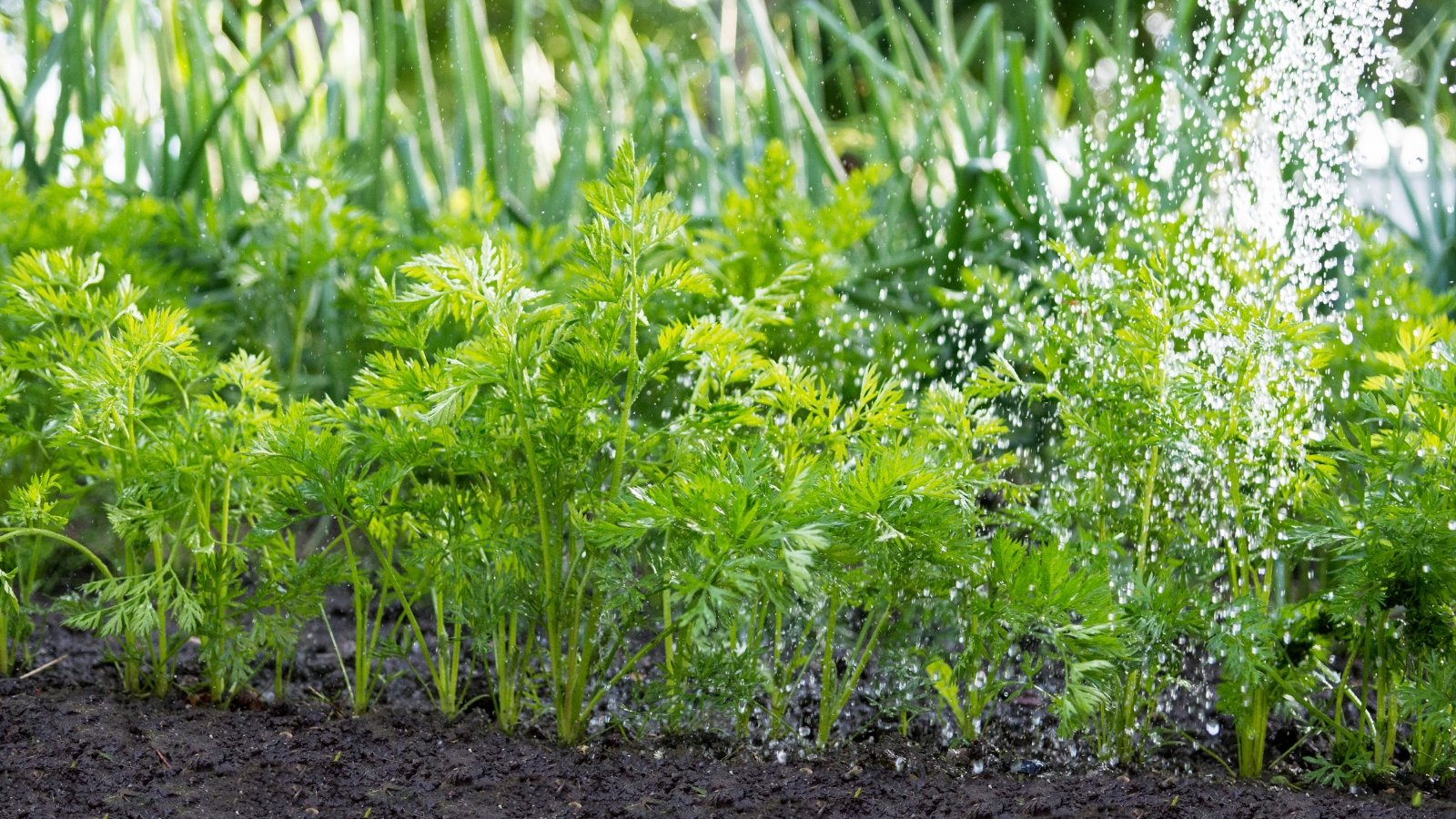 Maturity timing changes slightly with the season’s mood swings.
Maturity timing changes slightly with the season’s mood swings.Carrots are sweet and crunchy as baby vegetables and as full-sized, starchy roots. Pull them as small roots or let them fully develop for a more sizeable taper.
The first way to explore if carrots are ready to harvest is to know the length of time it takes the variety to mature from seed. Most carrots are ready to harvest in about 60 to 80 days after sowing. Faster-growing varieties mature in as little as 50 days, and bulky, storage types may take over 100 days.
The seed packet lists the days to maturity for the select variety, and is an average based on optimal growing conditions. We can usually add a few extra days to account for seasonal fluctuations, but it’s the starting point of when a carrot is full size. The days to maturity timeframe is a guide in combination with key physical signs.
At sowing, count out to the date they’ll likely mature (or ask Google for “X days from today”) and add it to the calendar. Begin checking within the readiness window. Use first and last frost dates as a benchmark for when to sow each season.
Measure the Shoulders
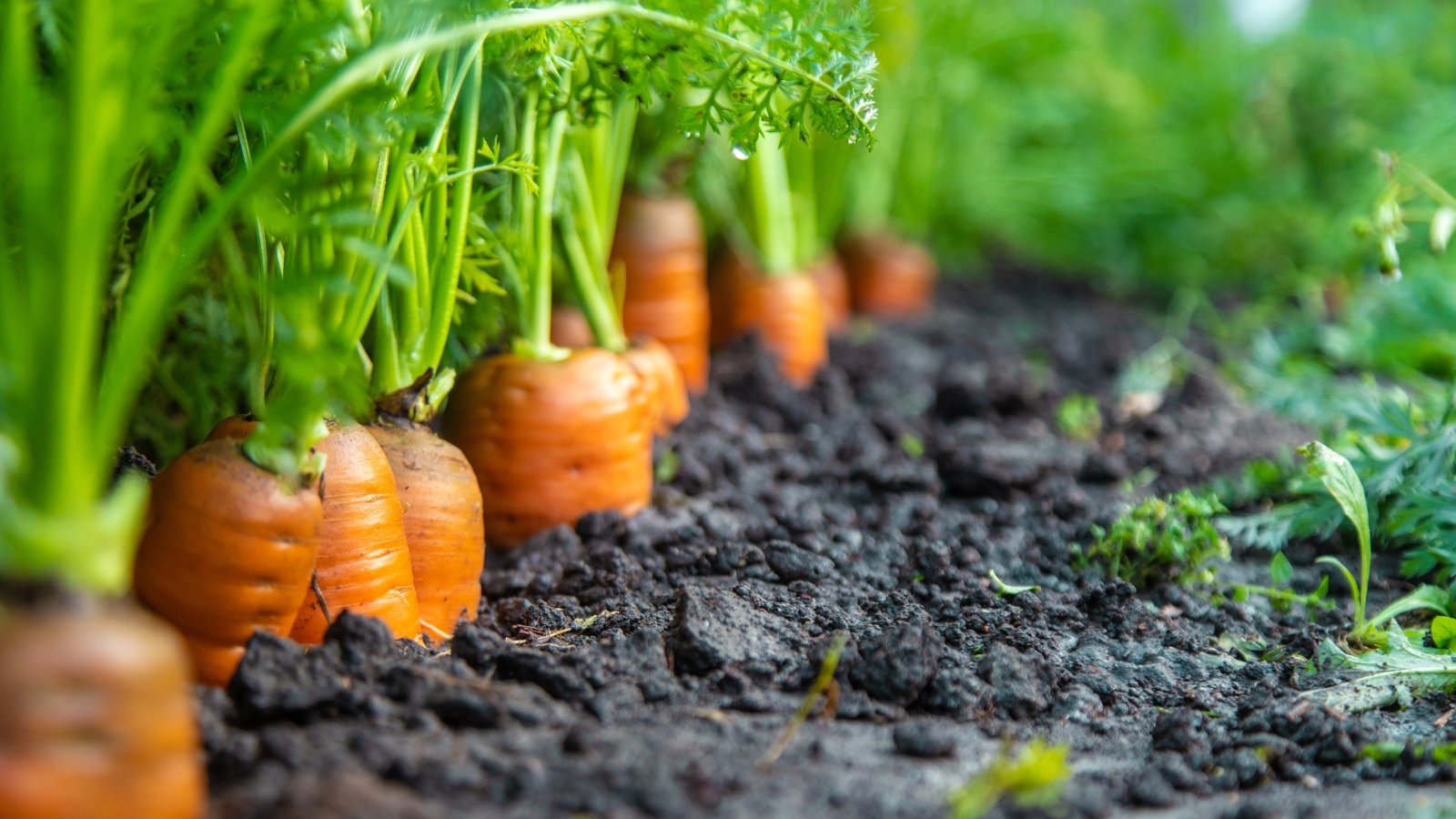 Roots thicker than half an inch are good to go.
Roots thicker than half an inch are good to go.Checking the shoulders, or the tops of the roots, is the best way to know if carrots are ready to harvest. The shoulders may shimmy up out of the soil as they swell and reach full size. Others will stay tucked in, and a sweep around the stem lets us feel if the top of the roots is firm and well-formed.
A good rule of thumb is that when the root is at least ½ an inch thick, the carrot is ready to harvest. Closer to an inch is optimal, with one to one and a half inches for larger storage types. If they’re too small for your picking, return the soil cover and continue to check over the coming days. Sometimes, shoulders push up too early and benefit from soil cover to protect them from sunburn.
Carrots left too long or that get too big become dense, woody, and tough. They lose their sweet crunch and may crack as they fill with moisture and then dry. Pull them at any size that’s less than one and a half inches at the shoulder.
Lush, Leafy Tops
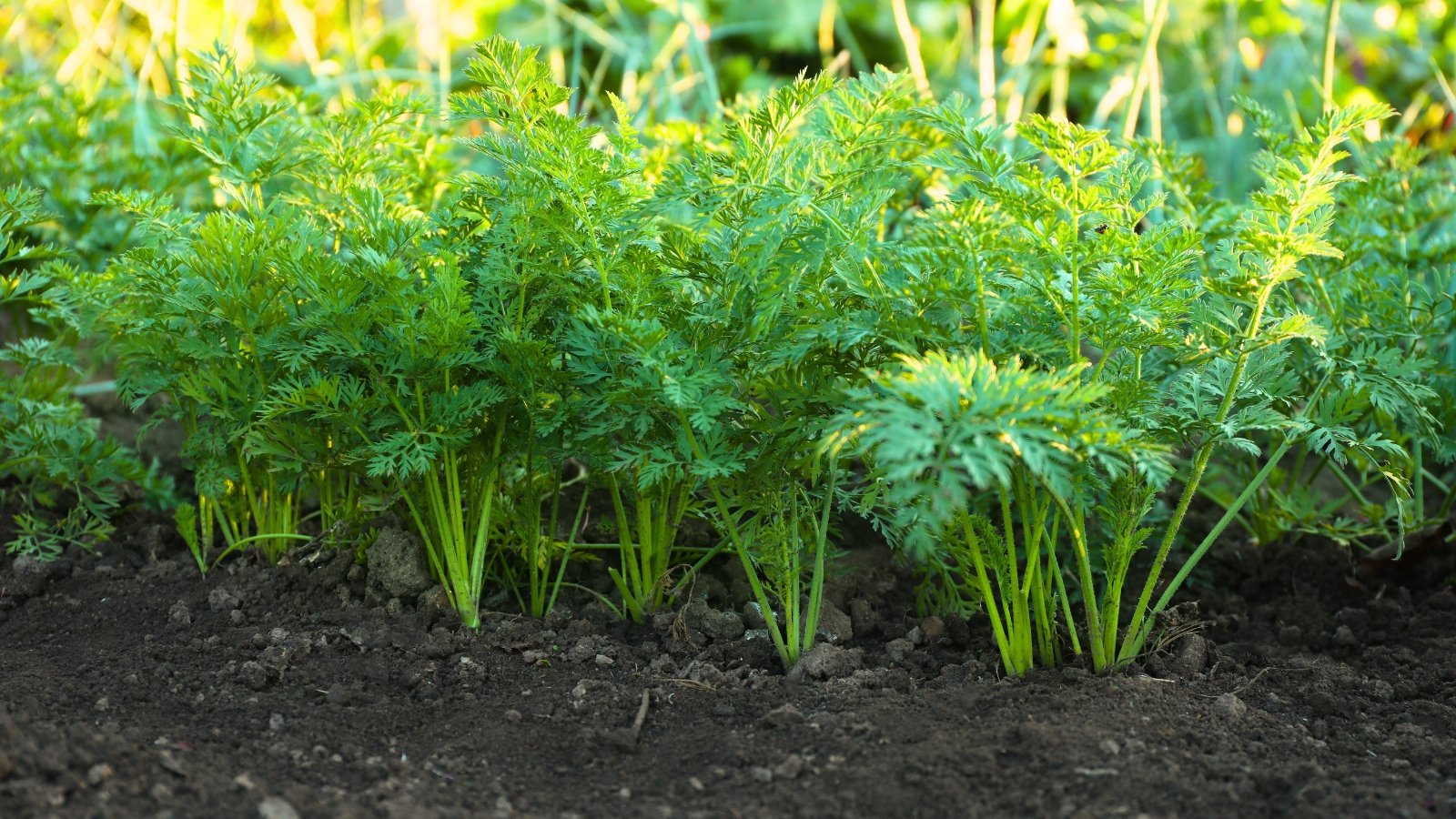 Full, feathery tops often mean the roots are ready.
Full, feathery tops often mean the roots are ready.Leaves are one of the best visual cues that carrots are ready to harvest. The frilly, feathery greens should be full at peak growth. Mature leaf size is variety dependent, but is usually about 10 to 12 inches tall. Short, thin tops may be a sign to allow more growing time.
The leafy tops are edible at any stage of development. Clip them from the roots after picking to enjoy fresh; they’re especially tasty as pesto.
Aged leaves die down in late summer and early fall as the season progresses and with frosts. Dieback is a natural signal of harvest readiness, too. For overwintered carrots, the leaves disappear with heavy freezes, but you can continue to harvest the roots. Mark the patch to know where to pull as late-season foliage dies back.
How to Harvest
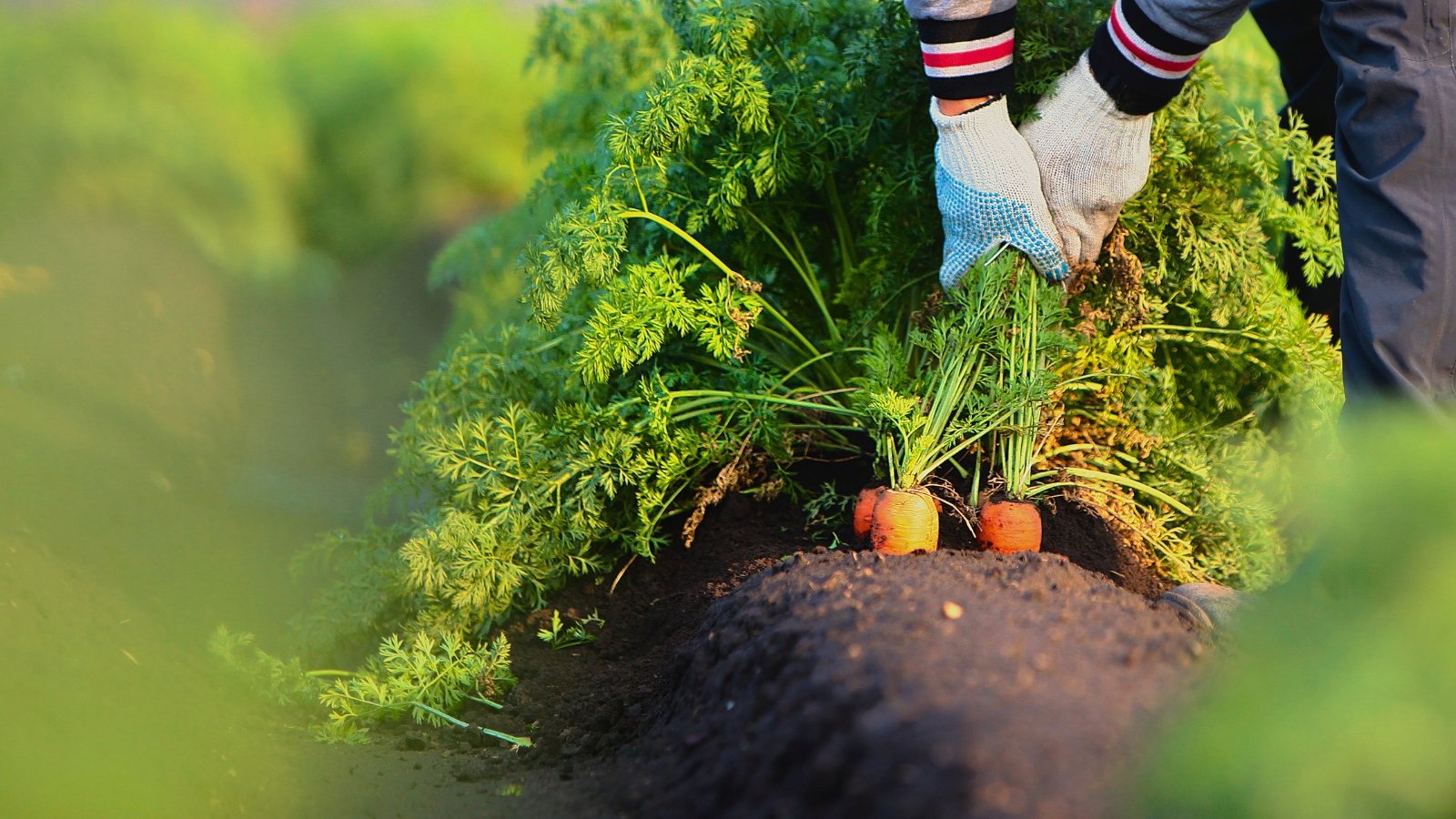 Soil softened by watering makes root lifting feel smooth.
Soil softened by watering makes root lifting feel smooth.When we reach the days to maturity with full shoulders and leafy tops, water the patch deeply the day before harvesting. Watering softens the soil for easy pulling and makes for water-filled roots and stems. Pick early in the day for the most plump roots and stems that resist breaking.
When your carrots are ready to harvest, dig a few or the entire crop, depending on your uses (fresh eating, storing, canning, freezing). Dig the surrounding soil with a spade, fork, or hand trowel, taking care not to damage the taproots. With soils loosened, gently lift the tops by hand, keeping the greens attached.
Wash the carrots and greens with cold water for fresh storage, or leave them unwashed for a root cellar situation. Clip the greens from the tops, leaving ½ to one inch of the stems attached.
Storage
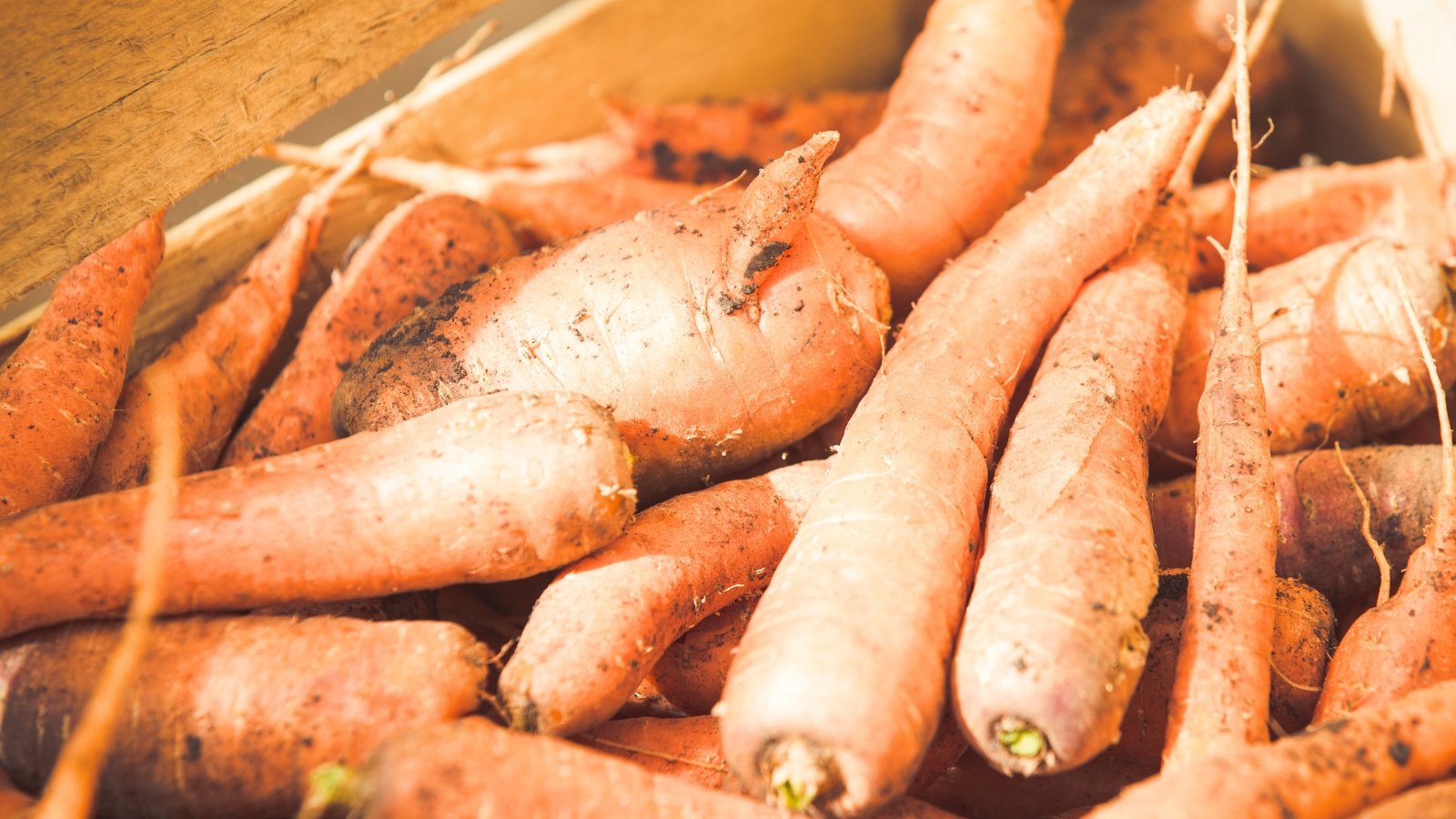 Cold, dark storage gives roots staying power through winter.
Cold, dark storage gives roots staying power through winter.Carrots last for several weeks in the crisper drawer of the refrigerator. Store them near 33°F (1°C) with tops detached. The greens don’t last as long as the roots, and, when attached, continue to draw moisture and nutrients. Use the leafy greens within a few days.
The vegetables store well over the winter in a cool, dry space. Separate roots in a tray of moist sand in a cool environment like a root cellar or basement for long-lasting fresh storage. You can also flash-freeze carrots for use over the year.
Favorite Varieties
Before the classic orange carrot were its wild ancestors in purple, red, gold, and white. Whatever the color of the variety, they bring a sweet flavor to enjoy fresh or to complement savory dishes. Carrots heighten the crudité platter and delight the senses with their tasty crunch.
‘Shin Kuroda’
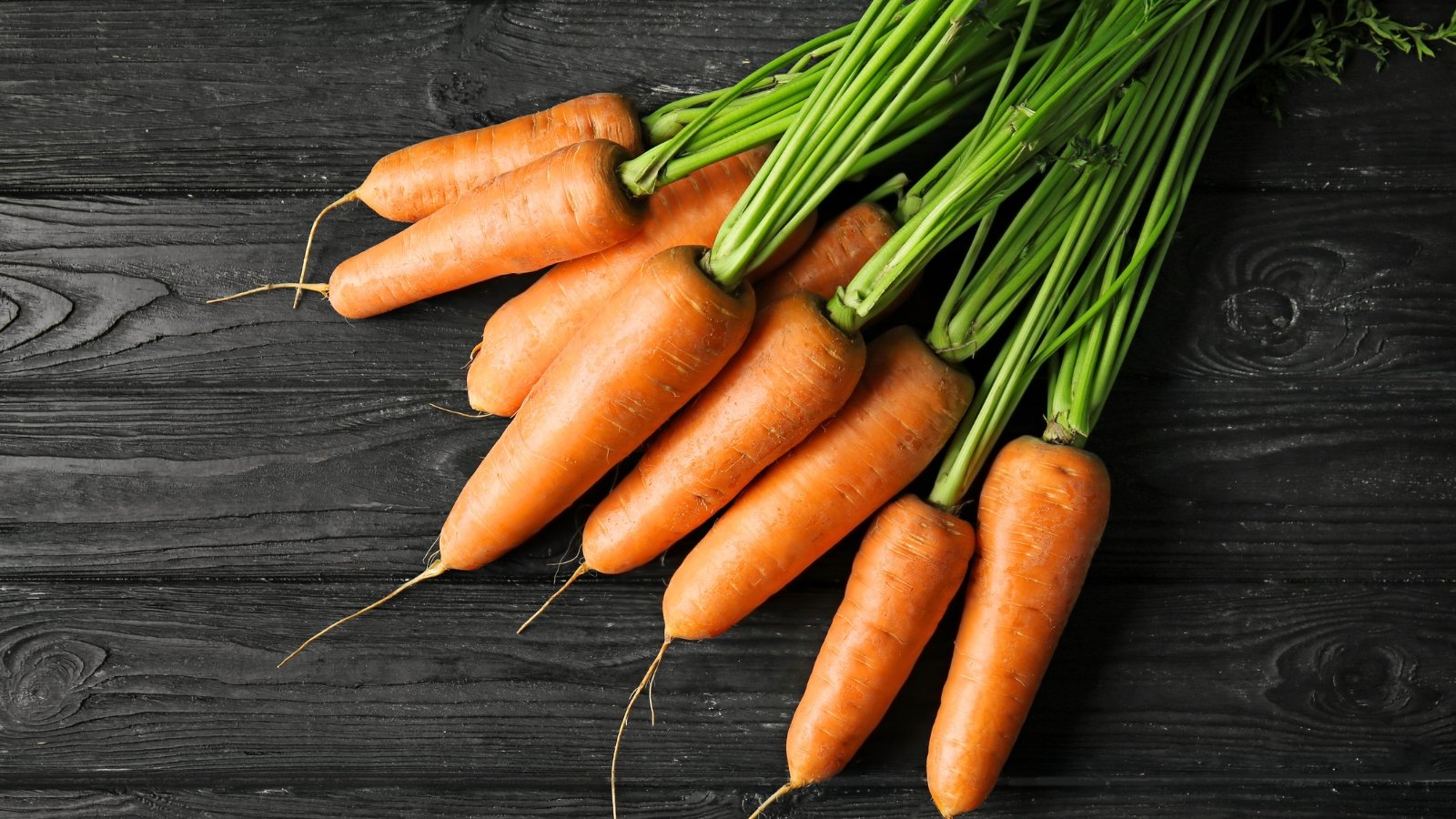 It can be picked young or left to fully mature slowly.
It can be picked young or left to fully mature slowly.‘Shin Kuroda’ is a Japanese variety with plump roots that are stout and sturdy. In deep and red-orange, they peak at five inches long. A high moisture content gives them an impressive sweetness.
‘Shin Kuroda’ is heat-tolerant. Carrots do best in organically rich, sandy loams, but ‘Shin Kuroda’ tolerates lesser compositions. With sturdy taproots, they grow in dense soils as long as they’re well-draining. The mature carrots will be ready to harvest in 75 days, or pluck them young.
‘Cosmic Purple’
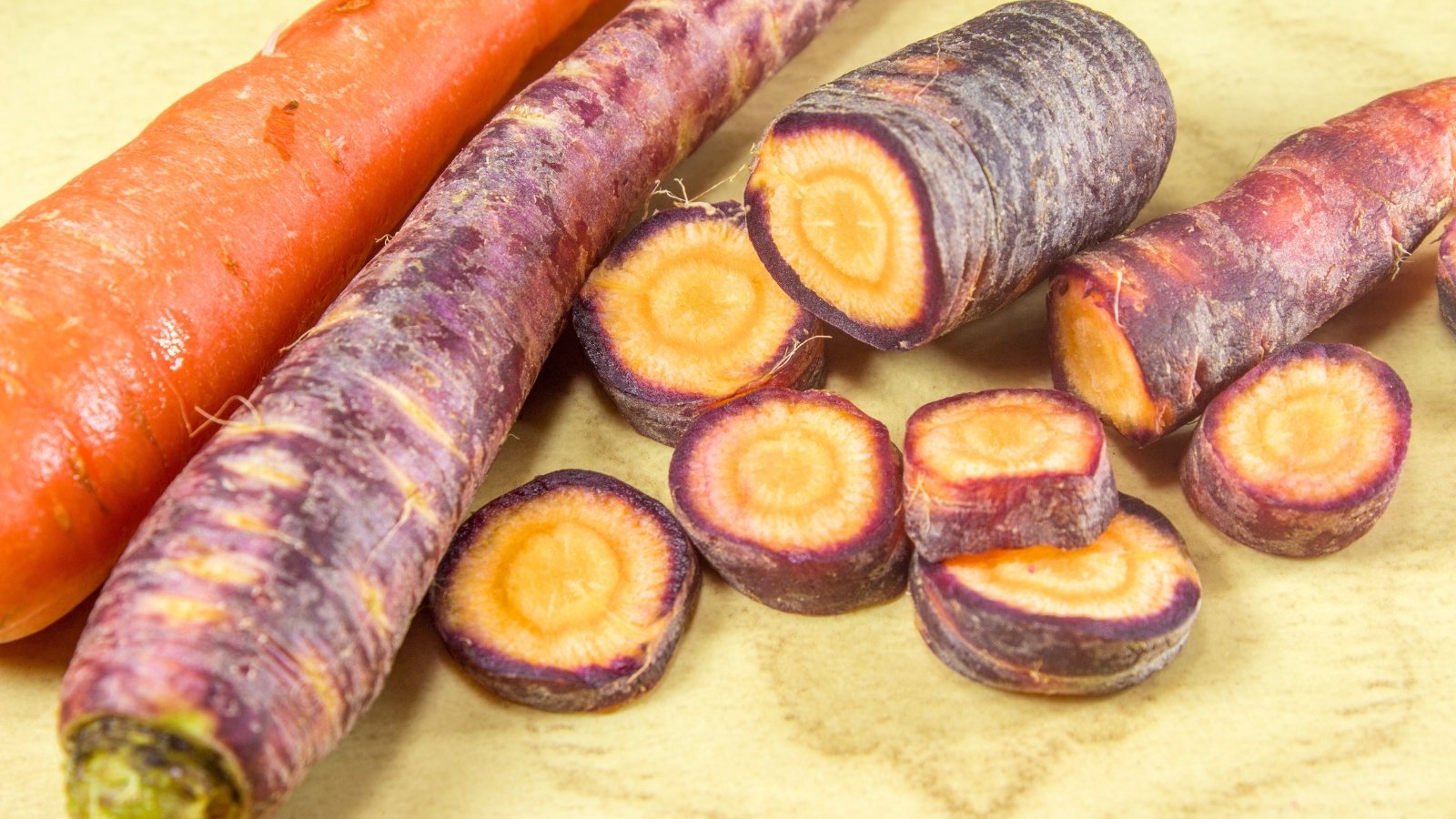 Ancient lineage shows in vibrant purple tones.
Ancient lineage shows in vibrant purple tones.‘Cosmic Purple’ is a colorful variety with ancestors that have been around for a millennium. In addition to the crop’s other nutrients and vitamins, there is the antioxidant anthocyanin, which is responsible for the purple tones.
The purple exterior gives way to an orange interior in a complementary hue. The conical roots taper at the end and reach six to seven inches long at peak development. ‘Cosmic Purple’ has imperator-type qualities in slender tapering and resembles Nantes types in its cylindrical form, size, and sweet crunchiness. The novel beauties have large leafy tops and reach full size in about 70 days.
‘Danvers 126’
 Tapered ends and strong tops make pulling a breeze.
Tapered ends and strong tops make pulling a breeze.‘Danvers 126’ is a late 1800s heirloom out of Danvers, Massachusetts, and is a reliable, classic orange carrot characteristic of the root vegetables. Developed for its yield, color, uniformity, and storage, ‘Danvers 126’ is crisp and sweet when fresh and adds savory goodness during cooking.
Danvers-type carrots have broad shoulders that taper to a point. The sturdy, fibrous roots perform well in heavier soil compositions and show good heat tolerance. They resist cracking, splitting, and other root disorders common among the crop.
‘Danvers 126’ peaks at six to seven inches long. The carrots are ready to harvest in around 65 days. The strong, full tops make for easy pulling. Use carrot tops to make pesto, chimichurri, or to flavor soups and stews.


 17 hours ago
10
17 hours ago
10
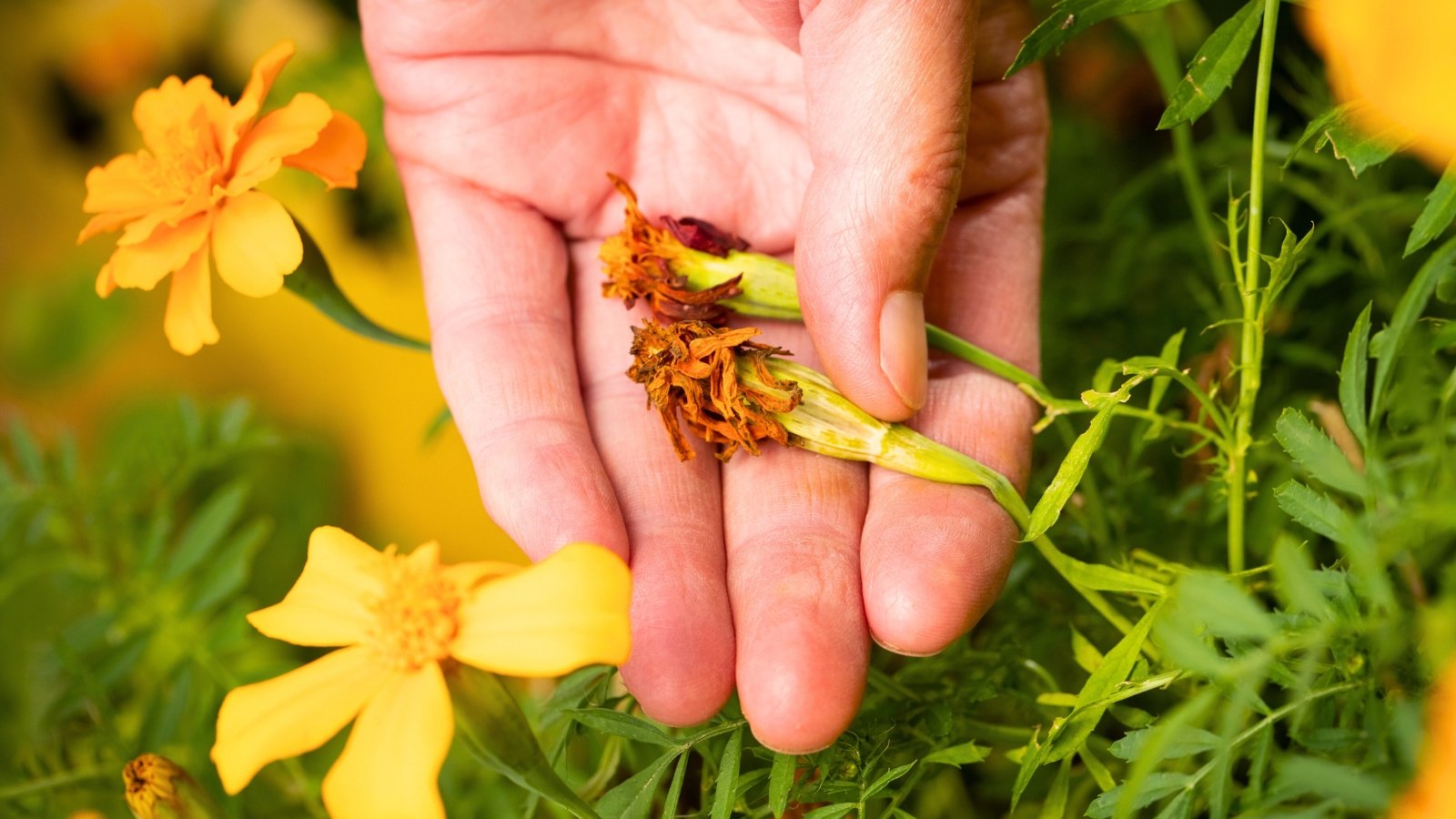



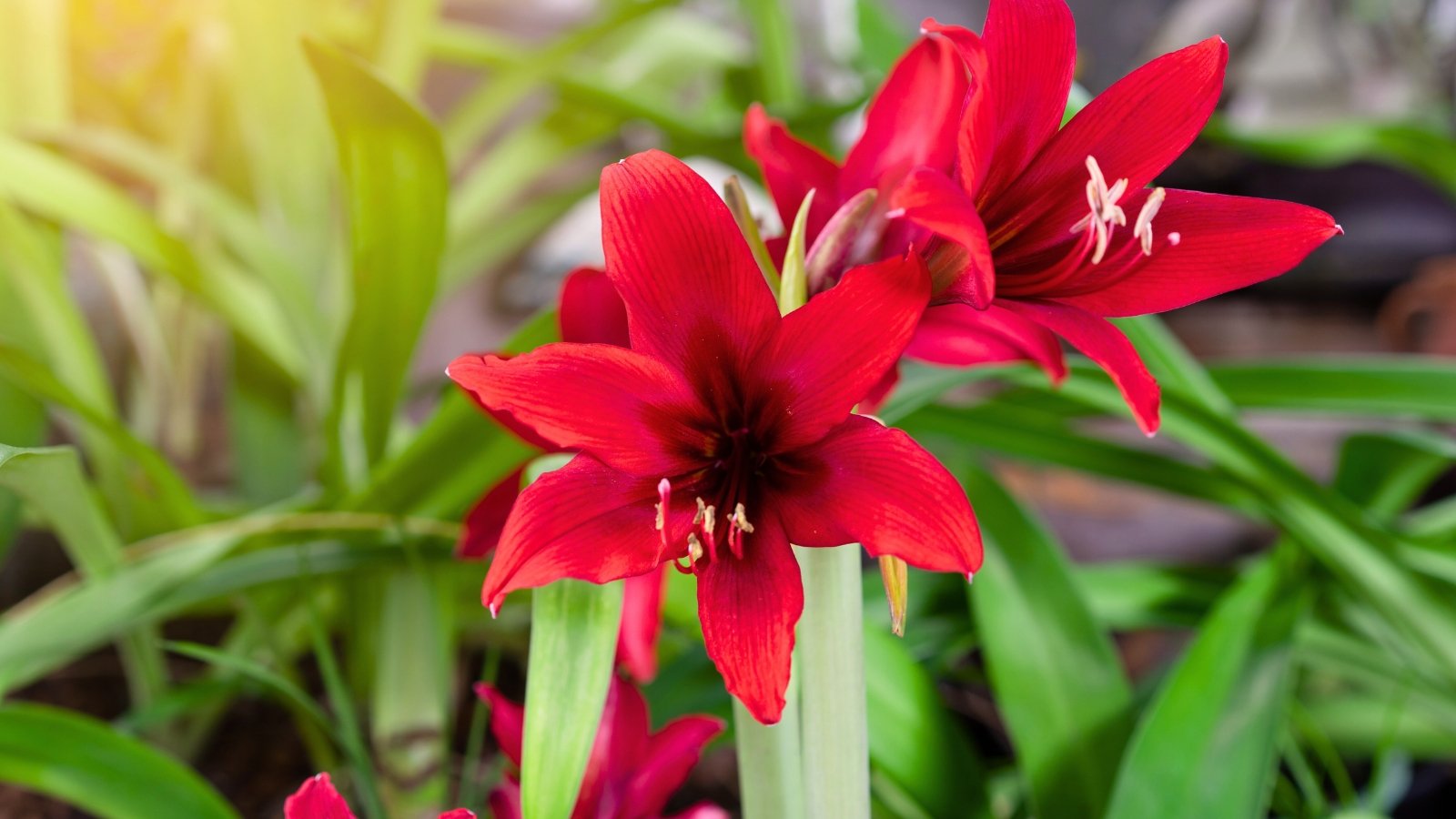
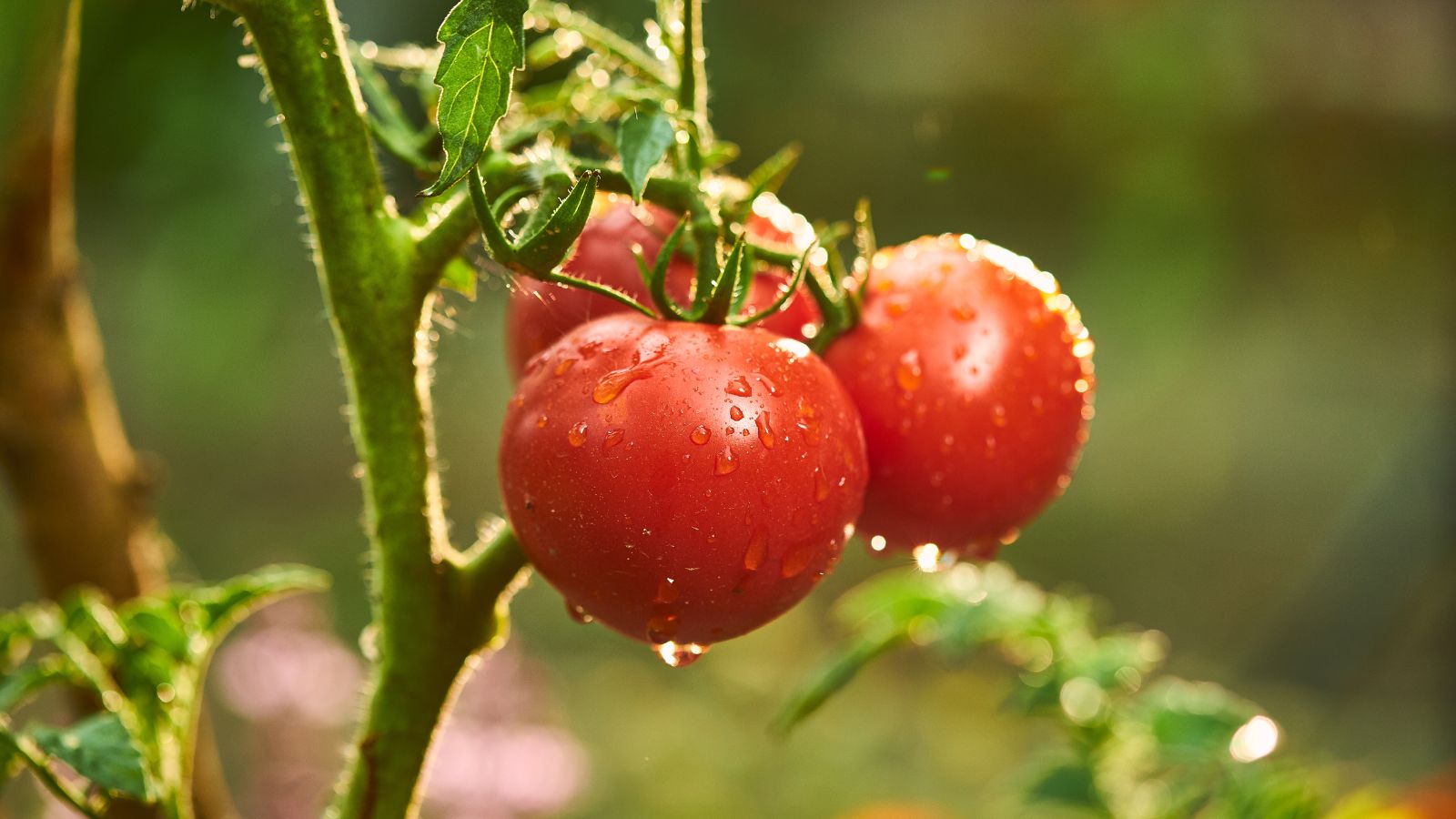















 English (US) ·
English (US) ·  French (CA) ·
French (CA) ·